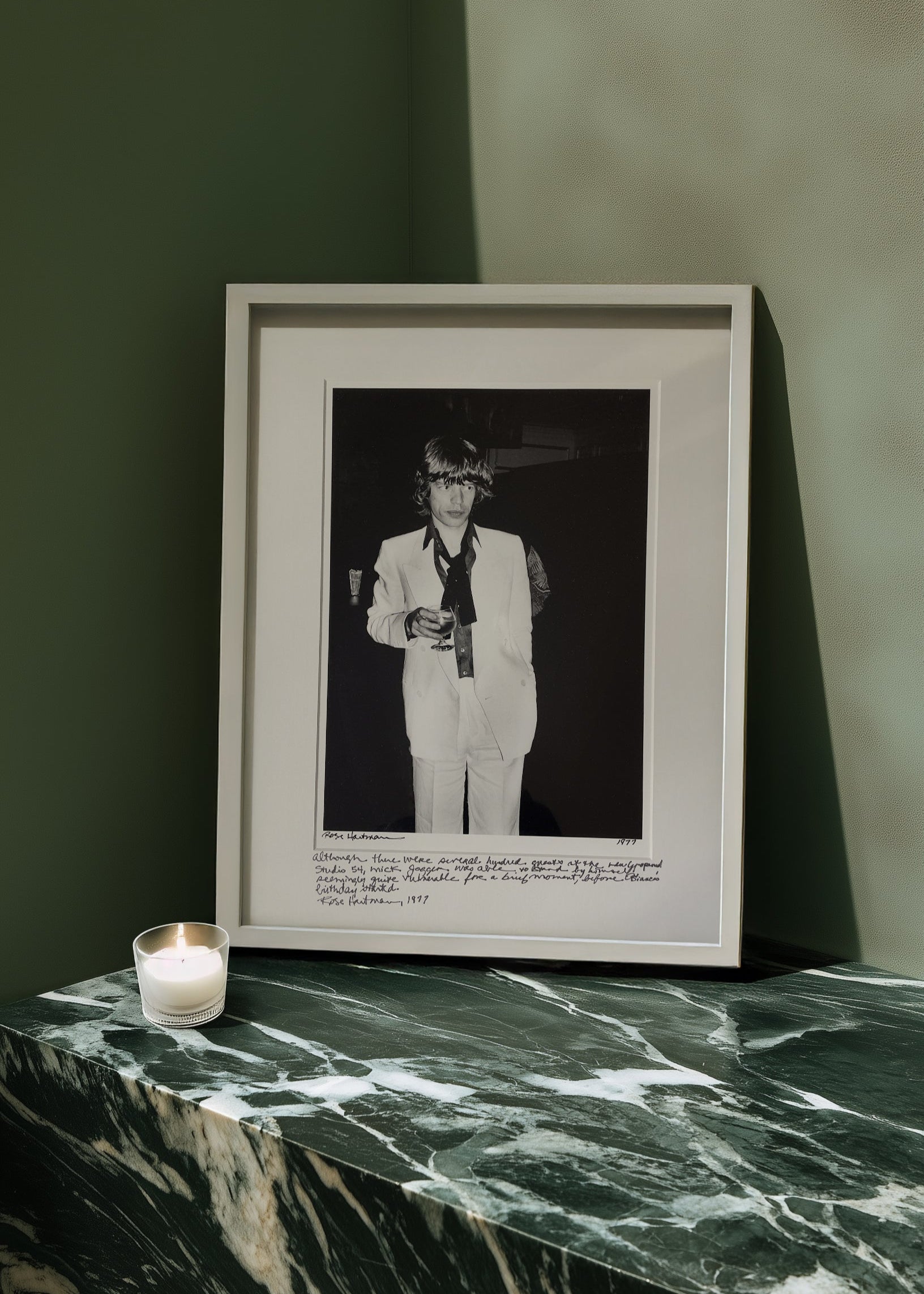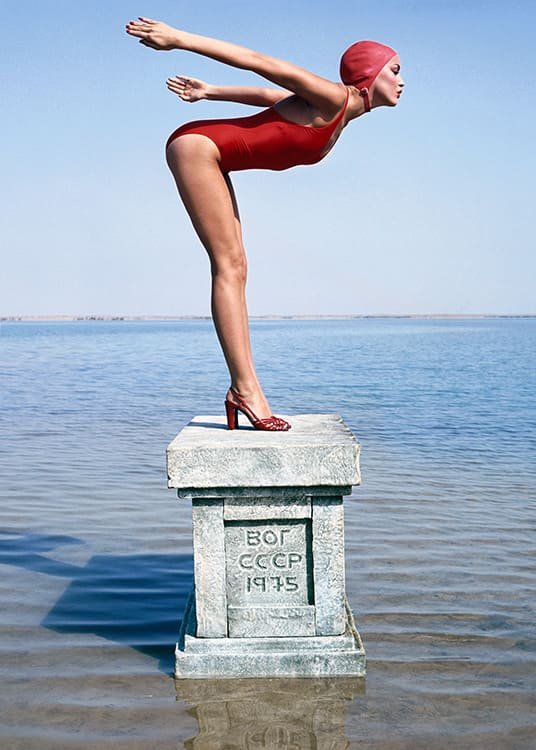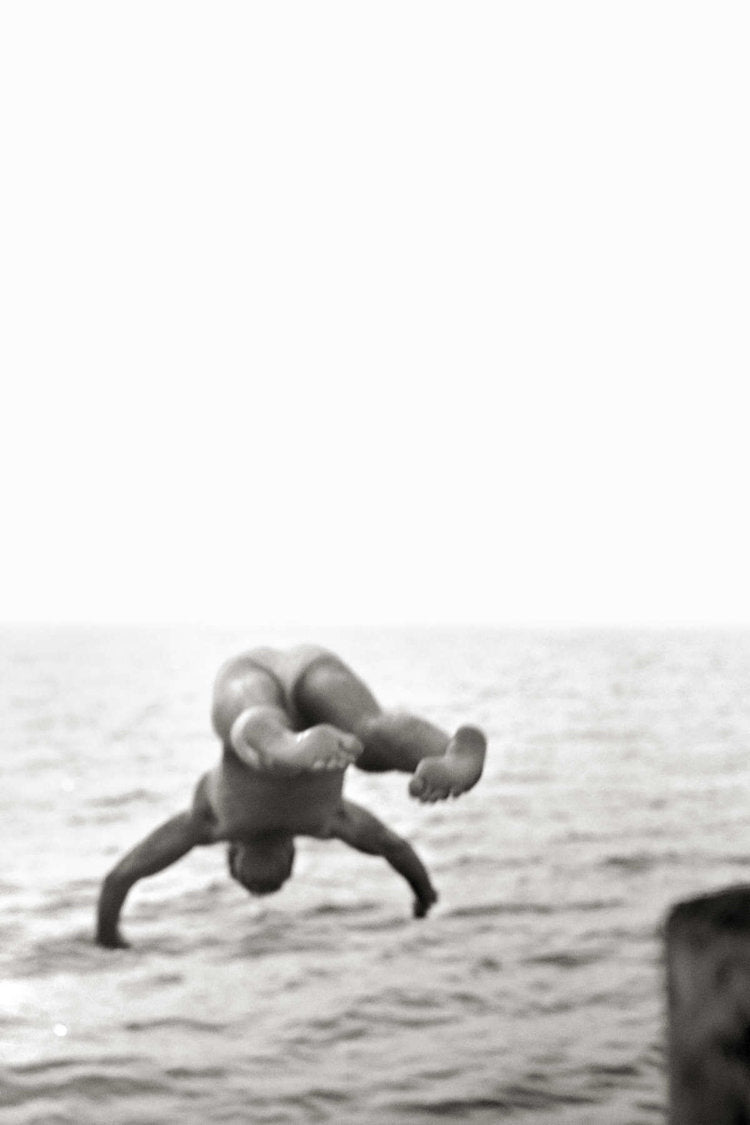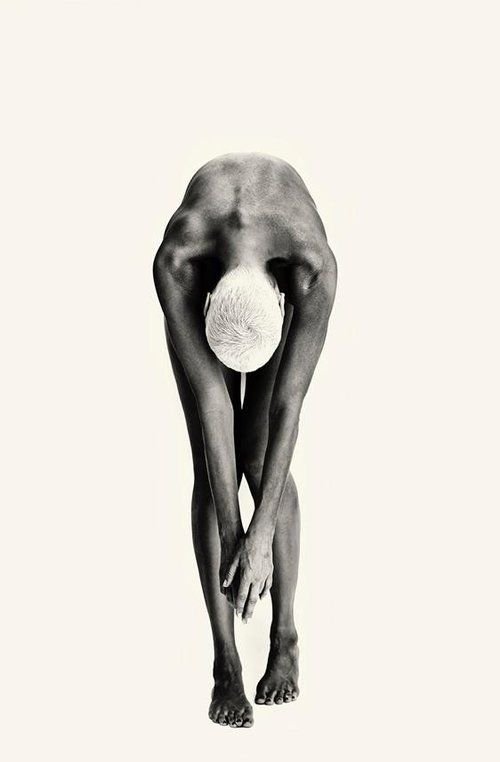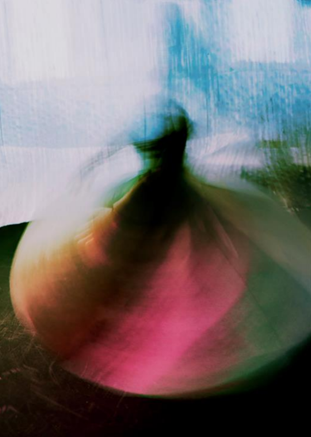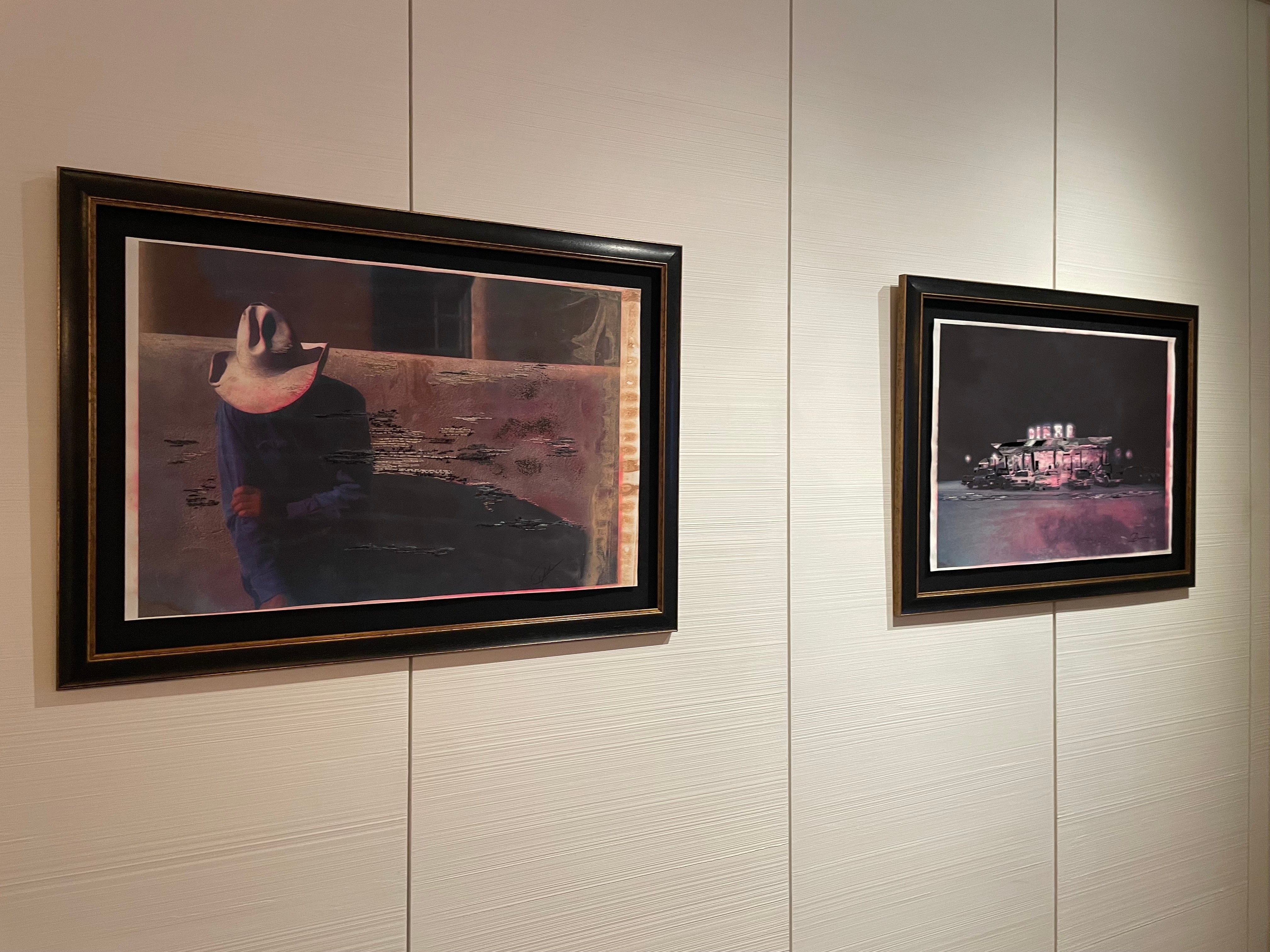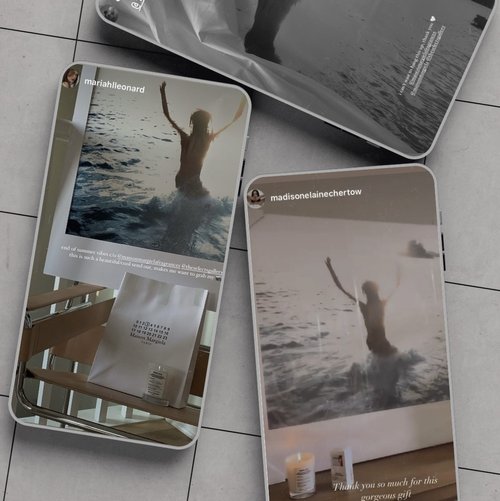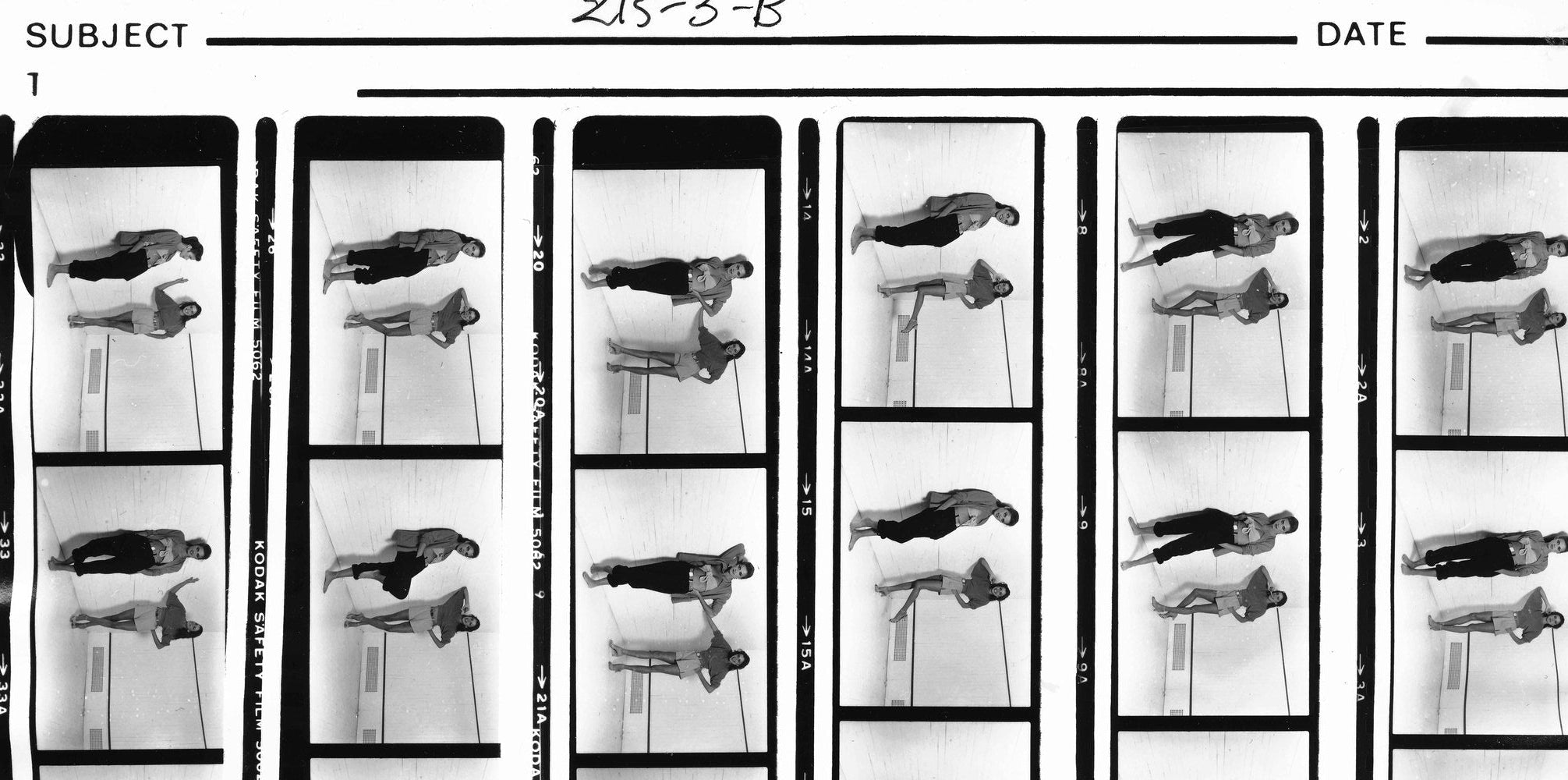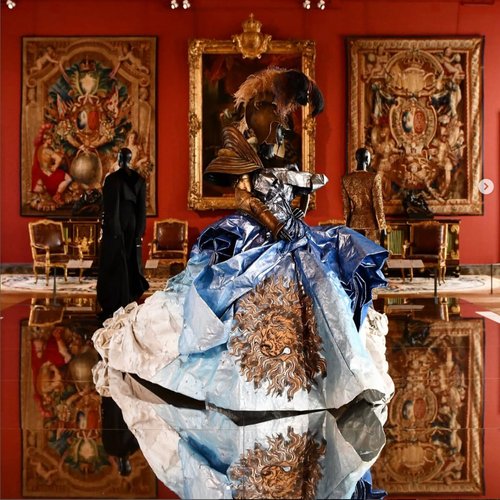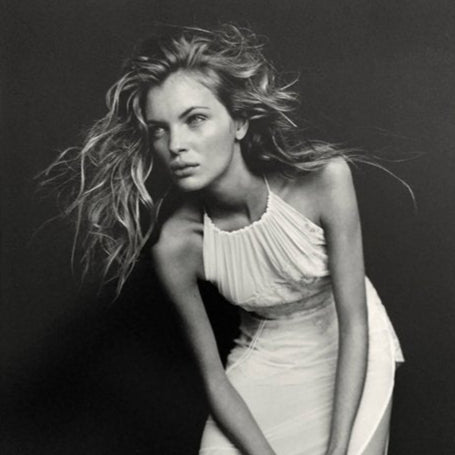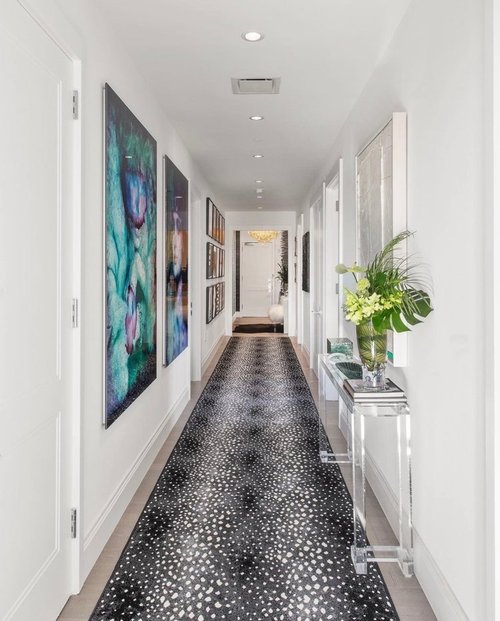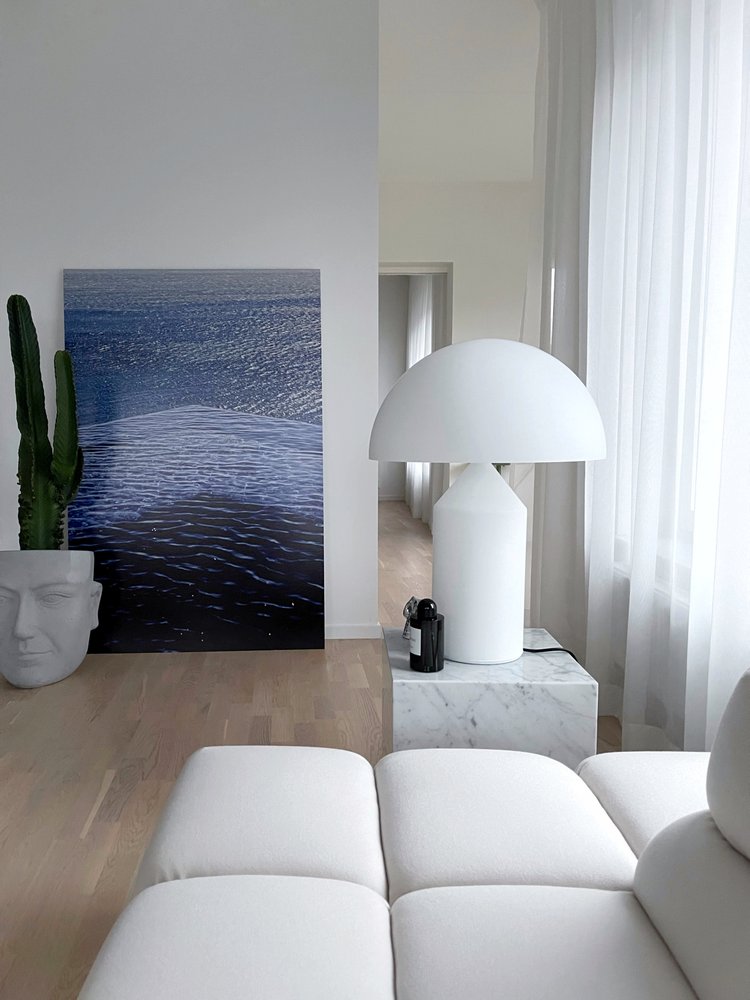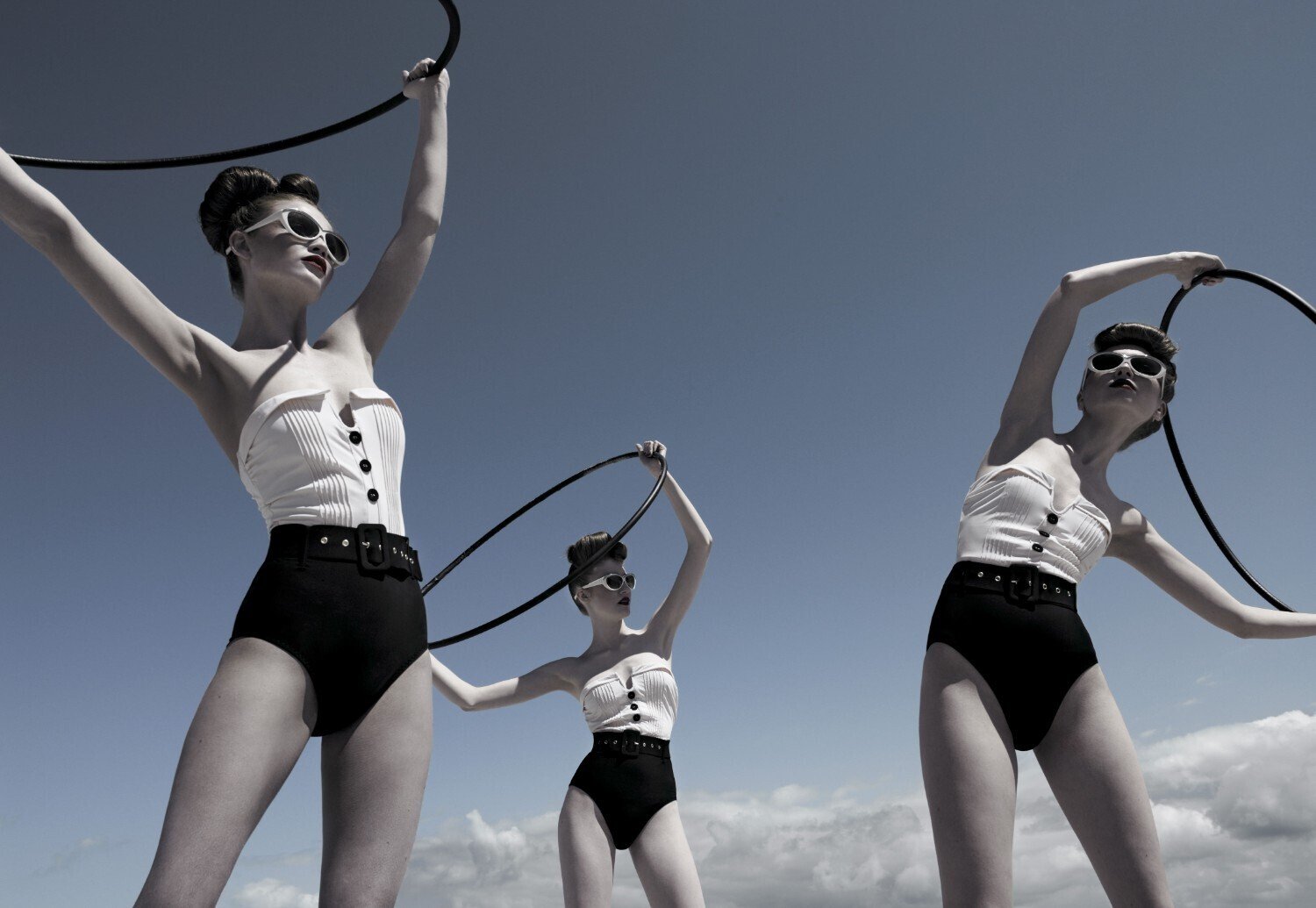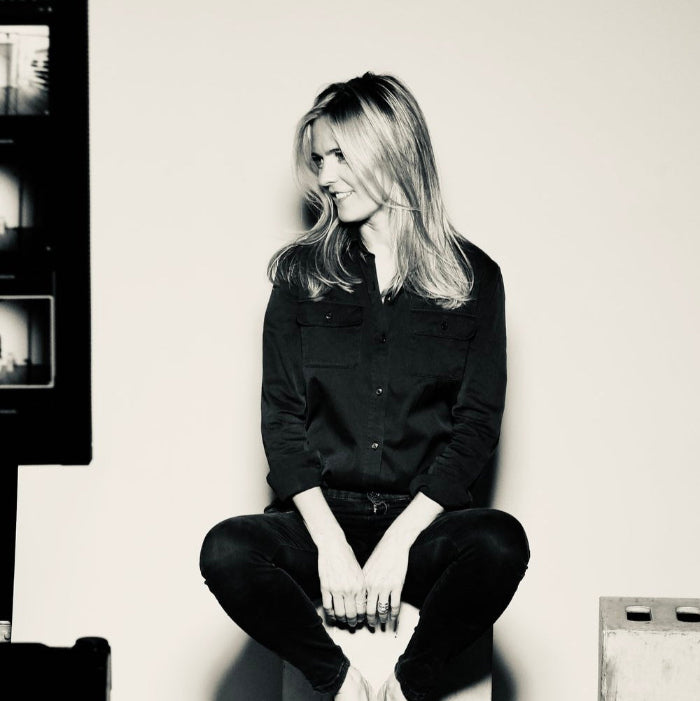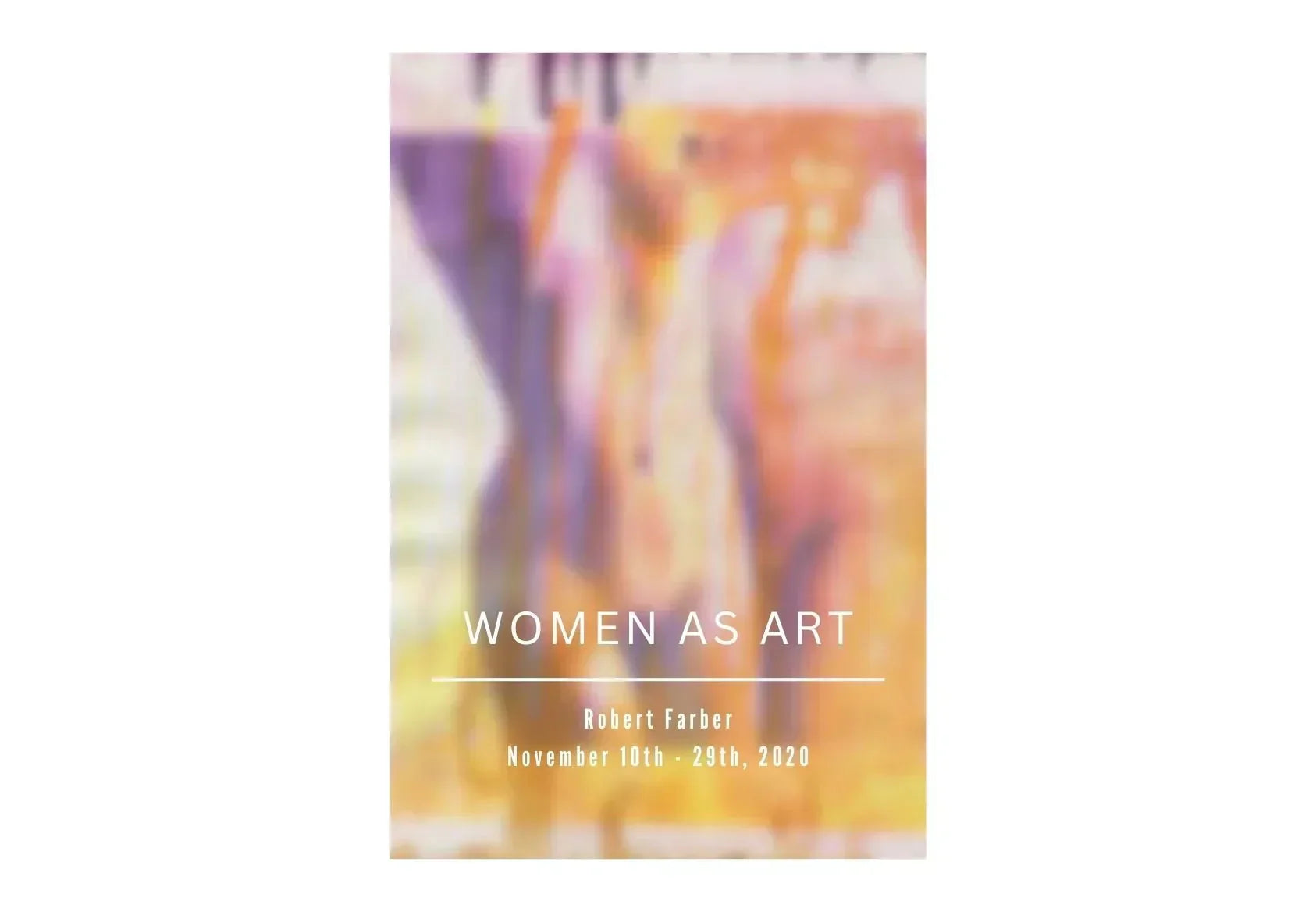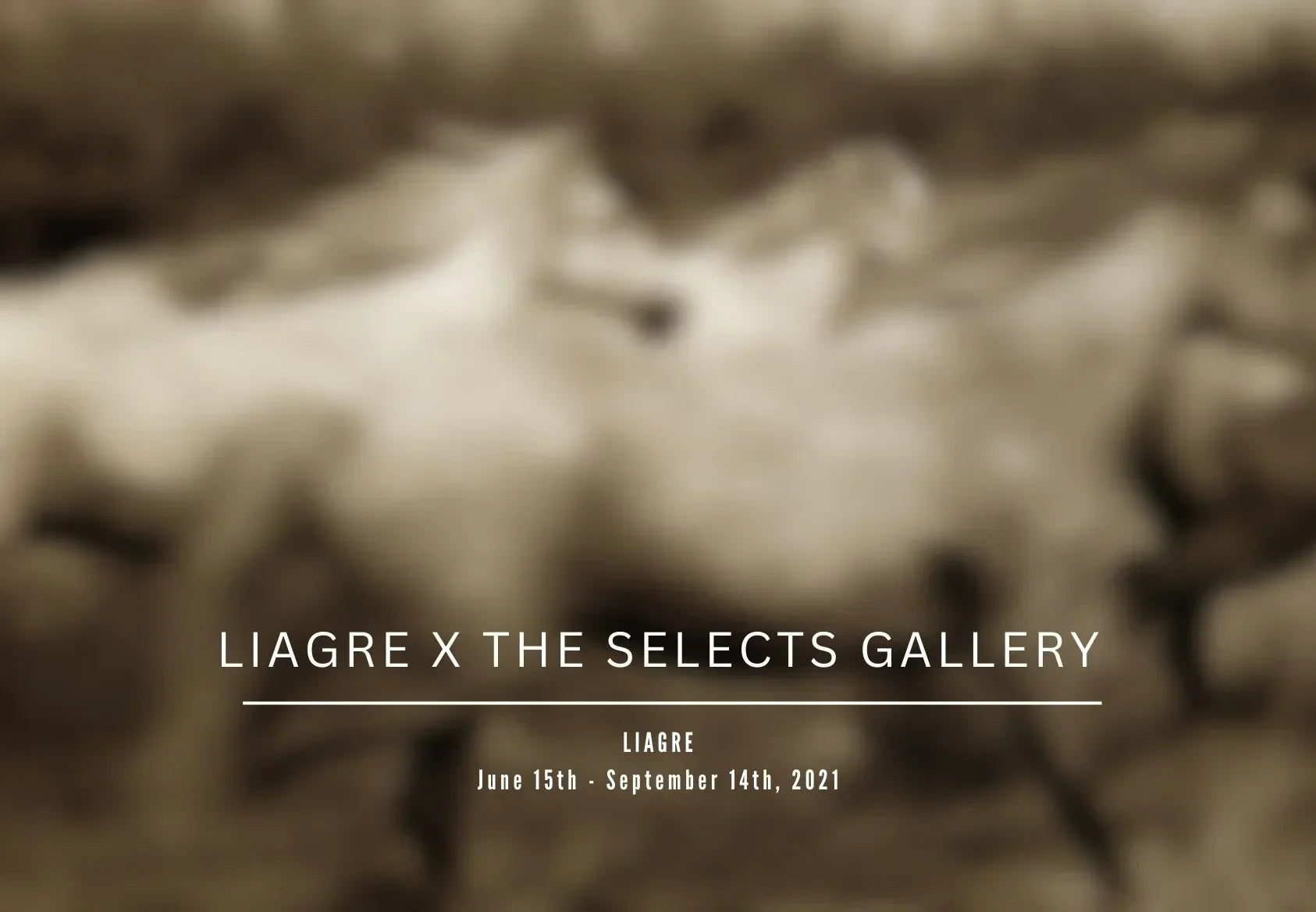Coquette
April 27th - May 16th, 2021“Dark sides are important. They should be nurtured like nasty black orchids.”
— Gillian Flynn
Fashion photography is always in conversation with the tropes in film, literature, and the arts, creating images which speak to the collective consciousness of an era. This curation explores how fashion photographers such as Emmanuelle Haugel, Giovanni Gastel, Greg Kadel, and Paul Bellaar have perpetuated and subverted the image of a compelling, enigmatic, and formidable woman, drawing on imagery from genres like film noir and the Western as well as symbols of eroticism, mysticism, and danger.
Seductive, secretive, and cunning; the coquette is the saloon girl, the femme fatale, the brains behind the heist. She appears in films of every era, each generation spinning stories of a dark beauty whose power is equal parts threatening and alluring.
This archetype can be traced back to the late 18th-Century in France, when the social and political tumult of the years leading up to the French Revolution led to an upsurge of philosophy, literature, and art which promoted sexual libertinism. Women took on lovers, carried out affairs, and used their charm and sexuailty to climb socially and financially in a world ruled by men. Writers such as Pierre Choderlos de Laclos and Marquis de Sade portrayed and promoted the image of a beautiful, dark, and powerful woman who manipulated, seduced, and did whatever she needed to gain power and security, while taking control of her narrative and asserting her autonomy.
Similar portraits of complex, compelling, and dangerous women appear in city brothels, saloons in the unexplored Western frontier, and the corner offices of illustrious companies; wherever there is a culture built on male preeminence, the libertine exists to take the power society will not grant to her and savor in the act of taking it.
The History of Coquette in Litterature
Emmanuelle Haugel’s “Gourmandise” depicts a woman we can imagine in an 18th Century French salon as easily as a Western saloon. The lace veil over her eyes evokes both sexuality and modesty, creating a playful tension between associations. The subject looks straight at the viewer, her gaze daring and magnetic, and the viewer’s eye flits between the ice blue eyes shrouded by lace and the merlot-painted fingers which bring a single raspberry to the seductress’ mouth. Below a lace choker, her revealed collarbones invite the eye to roam, imagining what it cannot see. The slightly blurred focus plays with the viewer, further shrouding the subject and creating an air of curiosity, intrigue, and deception. The image is utterly compelling; its subject is completely in control, playing with the viewer and enjoying the spectacle.
This woman is a coquette; she enjoys playing with men, she is both aware and in control of her sexuality. She is alluring and somewhat threatening; powerful and elusive. This archetype, this combination of traits, can be traced at least to the 18th Century in France, when the writings of Marquis de Sade hit Paris, when Marie Antoinette lowered necklines as she raised wig heights, when de Laclos documented a world ruled by sexuality and intrigue in his famous novel Dangerous Liasons.
Yet, the story of the coquette is not one of women using their sexuality to gain power, it is far more complicated and nuanced than that. The coquette is both trapped in and freed from societal norms and expectations. She is simultaneously dependent on and in control of powerful men. She has fought through the centuries, from the salons of Paris to its brothels, from the saloons of the Western frontier to the corner offices of illustrious companies, to define herself. She navigates a society not created for her to take power, perhaps bending (or completely dismissing) morals along the way -- she will do anything to survive and create space for herself. Ultimately, women throughout history have been able to use their sexuality to gain power, but not necessarily respect; this dynamic has created interesting relationships between gender, sexuality, and power throughout art history.
The coquette crops up not only in hundreds of years of art history, but in fashion photography, which has always been in conversation with art, film, literature, and the zeitgeist of an era. We are looking to explore how this archetype of a woman evolved throughout history and how it has been perpetuated and subverted by fashion photographers.
In the years leading up to and directly following the French Revolution, an onslaught of published philosophy on libertine sexuality hit Paris. It was a “period of licentiousness and excess,” as Kathryn CalleyGalitz explains in “François Gérard: Portraiture, Scandal, and the Art of Power in Napoleonic France.” Women took on lovers, carried out affairs, initiated divorces, and stepped into behind-the-scenes roles of power in salons and parties. While women still navigated a world which was not created for them, they were able to use their charm and sexuality to climb in society and influence the world of politics and intrigue ruled by men (1-15).
These new attitudes around women’s sexuality and place in society were partially due to new philosophies on the matter. “To Libertines — Voluptuaries of all ages, of every sex, it is to you only that I offer this work…” Marquise de Sade wrote in the introduction to his Philosophy in the Bedroom. His libertine novels championed homosexuality, polyamory, and sadism, putting to paper a dark and controversial sexuality. While his work was criticized, as its violence and promotion of topics such as incest, adultery, and cruelty were and continue to be shocking, its sexual openness was noted adn commented on by seminal feminist writers, paving the way for women to claim their volition and sexuality.
What is fascinating about the work of Marquise de Sade is that he champions women’s autonomy in a way that was incredibly forward thinking. “It is not in this age of preoccupation with the rights of man and general concern for liberties that girls ought to continue to believe themselves their families’ slaves, when it is clearly established that these families’ power over them is totally illusory…” (28) his character Madame de Saint-Ange comments. She tells Eugenie, a young girl who she is instructing to become a libertine, “your body is your own, yours alone; in all the world there is but yourself who has the right to enjoy it as you see fit.” (30). This critique over the oppression of women by their families and societal expectations of propriety and chastity comes long before its time.
The loosening of morals around sexuality in Paris, and especially women’s sexuality, can be seen in the portraiture of the time. Gerard was one of the most sought-after portraitists of his generation, and by painting someone he solidified their place in high society. His portraits of Parisian socialites such as Josephine Bonaparte, Madame de Talleyrand, Juliette Récamier, and Catherine Grand demonstrate the society heavyweights in sheer, diaphanous, low-cut gowns. Their exposed décolletage, daring gazes, and self-confidence demonstrates women living in a time where their sexuality and power was recognized. These women took advantage of both their appearance, their sexuality, and the representation of these things to define their place in society.

These women were in a very different position than the more famous prostitutes painted by artists such as Manet decades later, though the prostitutes which studded the canvases of the 19th Century Parisian art scene are also part of the story of women, sexuality, and art. While Manet’s famous Olympia gazes directly at the viewer, her status and anonymity create a very different set of power dynamics; Olympia was sought out by Manet, her sexuality and fierceness created by the male artist. The women in Gerard’s portraits occupy a much different space; while it cannot be said that these women were free from oppression, they were able to assert themselves as powerful women in control of their own sexuality, using portraiture as one means to fashion themselves and climb into the highest strati of French society.

Although the prostitutes painted by Manet, Degas, Picasso, and other 19th Century artists did not have the same access to emerging philosophies on women’s sexuality and autonomy, nor did they have the ability to seek out portraitists and control the way in which they were represented, their prominence in 19th Century French art is important. Manet especially painted prostitutes in a bold manner; they were on large canvases, sometimes naked or scantily dressed, and undeniably human. While these images can be argued as male fantasies, catering to the objectification of women by male artists and patrons, they also place women whose livelihood is their sexuality on canvases usually reserved for elite or mythical women. The prostitutes use their sexuality to gain power in a different way than Gerard’s society women; they create a source of income for themselves independent of marriage and social status (though they are arguably still dependent on men for their income). Despite the complexities of these prostitutes’ place in society and art, the confidence, the self-assuredness, and the openness in which they embrace their sexuality demonstrates changing attitudes towards women.
As Dolores Mitchell observes in “Manet’s ‘Olympia’: If Looks Could Kill,” Manet’s painting demonstrates Olympia is in control of her body and the viewer. She writes, “neither cat nor maid touch Olympia. But she does touch herself — with a firm hand, she closes access to her genitals and womb; she lies with legs crossed at the ankles and thighs pressed together. Thus, she controls the use of her body by another as well as her capacity for pregnancy” (43). John Moffit also comments on Olympia’s hand placement in “Provocative Felinity in Manet’s Olympia”, which he reads as distinctly uninviting. Further, her gaze is confrontational; by staring at a presumably male viewer, she denies societal norms regarding power. Olympia not only controls how her body is perceived, but also her relationship to the viewer. While women, and especially prostitutes, were imagined to serve the interests and fantasies of men, Olympia asserts her control over herself and her body.
Yet, the prostitute is not only threatening because of the control she asserts over herself and others. She is also threatening because of factors outside of her control. Mitchell notes that a contemporary reaction to an image of a prostitute was not just appreciation, but fear. She explains, “liasons between prostitutes and men of Manet’s class were common, but there was widespread anxiety over syphilis. Prostitutes, rather than their clients, were blamed for contagion… well before Manet’s time, connections had been established among prostitutes, disease, and death (39).” Mitchell also gestures to another key nuance in the understanding of such portraits. Olymbia“ embodies sensuality and short-lived beauty,” her portrait serving almost as a “vanities or memento mori.” (40) Everything in the painting, from the jewelry Olympia wears to the flowers her maid holds, is associated with vanity, death, and danger to men.
The fact that these women inspired fear not only because they defied the image of an ideal woman, but also because they were blamed for diseases that were equally spread by their patrons, demonstrates the nuanced relationships prostitutes had with power. Manet’s prostitute may have power, she may inspire fear, but she is not respected; in fact, Olympia is demonized as much as she is empowered. Further, the outrage which the painting received at the time demonstrates the precarious position prostitutes had in society, and how members of society refused to tolerate these women stepping out of the dark corners of nightlife in brothels and into the light of society and art. Her unique position, straddling power and oppression, power and loathing, demonstrates the sticky world women navigated in taking control of their sexuality.
The rise of lesbianism and artistic representations of lesbian relatinships in the Fin-de-Siecle demonstrates women taking control of their sexuality and expressing it, and themselves, in a way which rebelled against patriarchal societal norms. Their sexuality was not only practiced but made a public statement; Nancy Erber quotes “these women signaled their sexual preference with ‘a distinctive ‘tell’: it’s the gorgeous poodle, a lapdog with curled hair, bedecked with pom poms and sometimes ribbons, that's always by her side on strolls and drives...” (182). Performances featuring lesbian relationships were held at the Moulin Rouge and caused mass outrage among the press and the courts (184-194). It was a genuine fear among writers and society men that lesbianism would spread from brothels to society when former prostitues married out of the trade, and perhaps a warranted one as the Parisian lesbian subculture was becoming chic in the first years of the 20th Century (184). The development of a performativity among lesbians, the widespread acceptance and practice of lesbianism among Parisian women, and its controversial and often negative reception demonstrates that women were rebelling against patriarchal society in the ways they presented themselves and engaged in romantic and sexual relationships. The fear society men had of lesbians demonstrates the anxiety around, and therefore reality of, women’s autonomy and power. Thus, despite the complicated web of power, gender, and representation in the art and literature since the 18th Century, it is clear that these representations of female autonomy and sexuality paved the way for concrete societal changes.


This embrace of lesbian relationships and aesthetics can be seen in these illustrations. While Ferdinand Bac’s illustration of the 1885 book “Lucie-Berthe” depicts two female lovers in an embrace, the 1910 Fabein Fabiano illustration demonstrates two female lovers interrupted by a gentleman. The art of these decades not only demonstrates open displays of same-sex love between women, but also poses the company of a man as undesirable. These displays of women practicing a sexuality which goes against societal norms and expectations demonstrates the increasing freedom women had in creating their personal and sexual identities as well as the threat they posed to patriarchal society. While Olympia’s stare implies that her gentleman caller’s attention is undesired, the women in these pieces go as far as to force the man out of the room.
Let’s return to Emmanuelle Haugel’s “Gourmandise,” and her image “Untitled.” These images immediately read as sexy, their subjects as powerful and in-control. The women in these photographs are not bashful about playing with the viewer, about being in control. When placed in a lineage of images and artistic representations of female power and sexuality dating back to the 18th Century, the immediate association with these characteristics becomes more clear. Haugel draws on symbols created by decades of representing and representing powerful women. Yet, Haugel’s creative world is free from the anxieties of patriarchy; she creates a world in which women are free to express themselves and their sexuality without restrictions or limitations. Her images are free from the complex web of power and propriety that has trapped women for centuries; instead, her women run the creative world they exist in.


Like Haugel’s photos, Greg Kadel’s “Cowboy Cat” diptych depicts women who control how they are perceived by the viewer. Cast in silhouettes, this woman denies us access to her face and body. However, the confident stances she embodies asserts her dominance. Even in shadows, she dominates the viewer’s attention. The outlined cowboy hat draws on imagery of the Western, though this woman appropriates imagery traditionally associated with male cowboys and pioneers. We can imagine her shedding her corsets and skirts and taking on a persona which is more liberated, daring us to challenge her. Her confidence and self-assuredness is visible even when her face is not; we can see her rewriting the male-centered narratives of the Western in heels and a cowboy hat.


From an era closer to our own, Giovanni Gastel’s coquettish cool girls look at us through a veil of smoke. “Elisa 1” and “Elisa 2” feature a woman whose cold, uncaring, and alluring gaze cannot be hidden by sunglasses. The smoke wafts out of her mouth, collecting around her face. Like the woman in ‘“Gourmandise,” staring through a veil, and Greg Kadel’s cowgirls, Elisa restricts our access to her. If she acknowledges our presence, it does not faze her. She does not seem to care if we are looking at her or not, if we mind the smoke. There is an almost impossible neatness, a perfection, to the slicked back ponytail, the perfectly balanced frames, the turtleneck. She wears the outfit and does not allow it to wear her. Just as we can imagine Emmanuelle Haugel’s girls in a house of ill repute, toying with men and subtly controlling the strings, and Greg Kadel’s cowgirl seamlessly slipping from saloon to the open frontier, we can easily imagine Giovanni Gastel’s Elisa as a CEO or a vagabond, drinking alone at a luxe bar or pulling off a bank heist in a vintage car with chipping paint. Her elusiveness and quiet confidence are threatening and appealing; she can be anyone she wants. These photographers present portraits of the coquette: alluring, in control, and dangerous. While we might get a peek of what’s behind the mask, we also know that ultimately the coquette controls how she is seen, and how much remains hidden.


SOURCES:
Erber, Nancy. “In the Flesh: Scandalous Women's Performances in Fin-de-Siècle Paris” Proceedings of the Western Society for French History, vol 36, 2008, pp. 181-193.
Galitz, Kathryn Calley. “François Gérard: Portraiture, Scandal, and the Art of Power in Napoleonic France.” The Metropolitan Museum of Art Bulletin, vol. 71, no. 1, 2013, pp. 1–48.
Mitchell, Bea. “The 19th century was full of incredible lesbian artwork, and here’s the proof.” PinkNews, 22 Sept. 2017, https://www.pinknews.co.uk/2017/09/22/the-19th-century-was-full-of-incredible-lesbian-artwork-and-heres-the-proof/
Mitchell, Dolores. “MANET'S ‘OLYMPIA’: IF LOOKS COULD KILL.” Notes in the History of Art, vol. 13, no. 3, 1994, pp. 39–46.
Moffitt, John F. “PROVOCATIVE FELINITY IN MANET'S ‘OLYMPIA.’” Notes in the History of Art, vol. 14, no. 1, 1994, pp. 21–31.
Article written by Kaila Basile


